NIGHT AND THE CITY
Night and the City is a classic film noir released in 1950, directed by Jules Dassin and starring Richard Widmark, Gene Tierney, and Googie Withers.
The movie takes place in the gritty underworld of London, where Harry Fabian (Widmark), a two-bit hustler, dreams of striking it rich. He hatches a scheme to become a wrestling promoter, but his efforts are stymied by the criminal elements he gets involved with.
As Harry’s plans spiral out of control, he becomes increasingly desperate and paranoid, and his relationships with those around him begin to crumble. Meanwhile, his girlfriend Mary (Tierney) tries to convince him to give up his dangerous pursuits and start a new life with her.
The film is notable for its atmospheric cinematography and its complex, morally ambiguous characters. It has been hailed as one of the greatest film noirs of all time and a masterpiece of the genre.
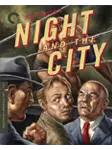
Director: Jules Dassin
Year: 1950
Stars: Richard Widmark, Gene Tierney, Googie Withers
Awards: Best Director at the Cannes Film Festival
PLOT
The film is set in post-World War II London, a city still reeling from the effects of the war and struggling to rebuild. Against this backdrop, we follow the story of Harry Fabian, a small-time hustler and dreamer with big ambitions.
Harry is a man who sees himself as a genius, but one who has never quite found his place in the world. He’s constantly scheming and looking for the next big score, but his plans always seem to fall short. He’s desperate to make it big, to be somebody, and he believes that becoming a wrestling promoter is the key to achieving his dreams.
However, Harry’s plans are complicated by the criminal underworld of London. The established wrestling promoter, Kristo, warns Harry to stay out of his territory, but Harry refuses to back down. Instead, he turns to Kristo’s former associate, the sinister and unpredictable Phil Nosseross, for help. Harry believes that Nosseross can provide him with the money and connections he needs to launch his wrestling promotion.
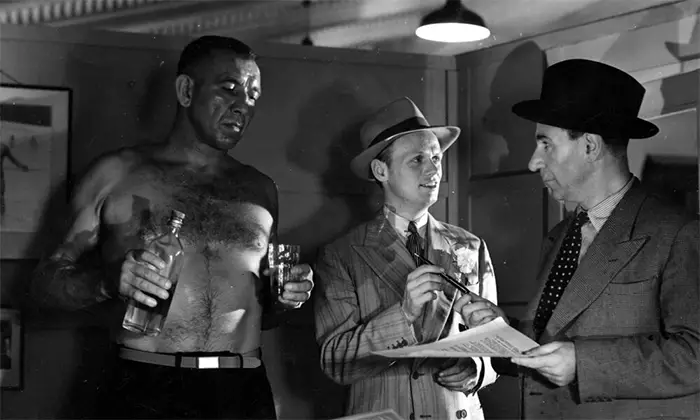
Nosseross is a dangerous and volatile figure who quickly sees through Harry’s scheme. He agrees to finance Harry’s wrestling venture, but he has ulterior motives. He’s attracted to Harry’s girlfriend, Mary, and wants her for himself. He sees Harry’s desperation as an opportunity to take advantage of him and use him to further his own criminal interests.

As Harry gets deeper and deeper into debt to Nosseross, his life becomes increasingly complicated. He tries to juggle multiple schemes at once, from selling stolen goods to organizing illegal boxing matches. He’s always on the move, always trying to stay one step ahead of the law and the criminal underworld.
Meanwhile, Mary is growing increasingly worried about Harry’s behavior. She loves him deeply but fears that he’s in over his head and that his dreams will lead to their downfall. Mary has a dream of her own, which is to leave London and start a new life with Harry, but she knows that won’t be possible until he can get his act together.
Harry’s dreams of success are further complicated by his relationships with the other characters in the film. He’s constantly trying to manipulate and outsmart them, but he’s never quite sure who he can trust. His former mentor and wrestling legend, Gregorius, is initially skeptical of Harry’s grandiose plans, but he eventually agrees to help him promote a wrestling match between two of the biggest names in the sport. Harry hopes this match will be his big break and allow him to escape Nosseross’s control.
However, the night of the big match, everything falls apart. Nosseross discovers Harry’s plan to break away and enlists Kristo’s help to ruin the match and destroy Harry’s reputation. Harry’s dreams of making it big are shattered, and he realizes too late the danger he’s put himself and Mary in.
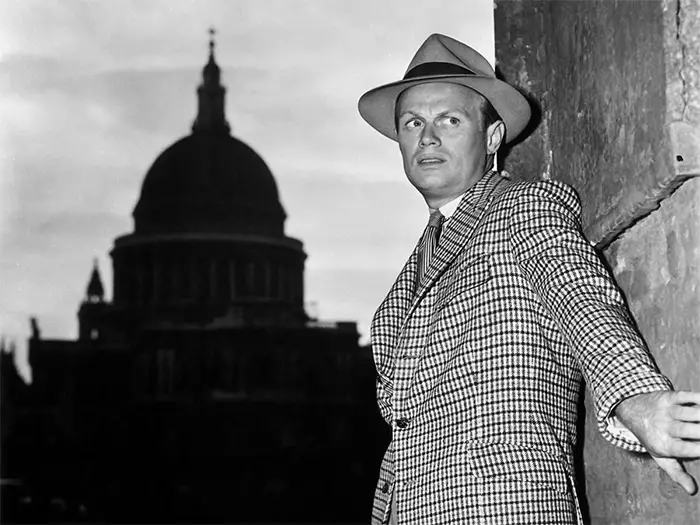
In the film’s climax, Harry and Mary flee from the city and try to start a new life together. However, they’re pursued by Nosseross and his henchmen, leading to a violent and tragic ending.
One of the things that makes “Night and the City” such a powerful film is its exploration of themes like greed, desperation, and the seedy underbelly of urban life. Harry is a complex and multifaceted character who is both sympathetic and deeply flawed. He’s a man who wants to be somebody, to achieve greatness, but who is ultimately undone by his own hubris and his inability to see the danger that surrounds him.
THEMES
“Night and the City” is a film that explores several complex themes, many of which are central to the film noir genre. These themes include ambition, greed, corruption, and the quest for power and status.
One of the most prominent themes in the film is ambition. The central character, Harry Fabian, is a man driven by a relentless desire to make something of himself, even if it means lying, cheating, and stealing to get there. He sees himself as a hustler, someone who is always looking for an angle, but his ambition ultimately leads him down a path of destruction.
Another key theme in “Night and the City” is greed. The film’s characters are consumed by a desire for money and material possessions, and their greed ultimately leads to their downfall. Harry, in particular, is driven by a need for wealth and status, and he is willing to do whatever it takes to achieve these goals, even if it means betraying those closest to him.
Corruption is also a major theme in the film. Nearly every character in “Night and the City” is involved in some kind of illegal or unethical activity, whether it’s Harry’s illegal wrestling matches or his girlfriend’s involvement in prostitution. The film portrays a world where corruption is rampant and those who play by the rules are often the ones who suffer.
Power and status are also explored in “Night and the City.” Many of the characters are obsessed with achieving a certain level of power or status, whether it’s through wealth, fame, or social connections. Harry, in particular, is driven by a desire to be seen as a big shot, someone who is respected and admired by those around him.
Finally, “Night and the City” also explores themes of betrayal and loyalty. Harry’s relationships with the other characters in the film are marked by a constant struggle between these two forces. He is willing to betray his friends and loved ones in order to achieve his goals, but he is also deeply hurt by their betrayals of him. The film portrays a world where trust is a rare commodity, and even the strongest relationships can be shattered by greed and ambition.
RECEPTION
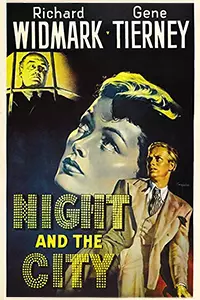 “Night and the City” was released to critical acclaim in 1950, with many critics praising its dark, atmospheric visuals, complex characters, and tense plot. It was seen as a standout example of the film noir genre and one of the best films of the year.
“Night and the City” was released to critical acclaim in 1950, with many critics praising its dark, atmospheric visuals, complex characters, and tense plot. It was seen as a standout example of the film noir genre and one of the best films of the year.
One of the film’s most praised aspects was its direction by Jules Dassin. Critics noted his use of shadow and light to create a sense of foreboding and suspense, as well as his ability to draw out strong performances from the cast. Richard Widmark’s portrayal of Harry Fabian, in particular, was singled out for its depth and complexity.
The film’s exploration of themes like greed, ambition, and the corrupting influence of power also garnered praise. Critics noted how “Night and the City” offered a biting commentary on post-war society, particularly its portrayal of London as a city struggling to rebuild and find its footing in the aftermath of World War II.
Despite the film’s critical success, it initially struggled at the box office in the United States. This was partially due to the fact that it was released at a time when the film industry was shifting away from the film noir genre and towards more lighthearted fare. Additionally, the film’s bleak themes and dark visuals may have made it a difficult sell for audiences looking for more escapist entertainment.
However, “Night and the City” was more successful internationally, particularly in Europe, where it was embraced by audiences and critics alike. It won the award for Best Director at the Cannes Film Festival and helped establish Jules Dassin as a major director in the international film community.
Over time, “Night and the City” has come to be seen as a classic of the film noir genre and one of the best films of the 1950s. It has been praised for its stylish visuals, complex characters, and unflinching portrayal of the darker aspects of urban life. The film’s influence can be seen in countless works of cinema and literature that have explored similar themes and subject matter.
In recent years, “Night and the City” has been the subject of renewed critical attention, with many scholars and critics revisiting the film and its place in cinematic history. Some have argued that the film’s depiction of London as a city struggling to rebuild and reinvent itself is particularly resonant in the wake of Brexit and the ongoing political and social upheavals in the United Kingdom.
LONDON IN "NIGHT AND THE CITY"
London plays a crucial role in the film, serving as both a setting and a character in its own right. The film portrays a gritty, seedy side of London, one that is rarely seen in mainstream cinema.
The opening scenes of the film depict Harry Fabian walking the dark and deserted streets of London at night, with only the distant sound of trains and the occasional flickering streetlamp to break the silence. This sets the tone for the rest of the film, which is steeped in a sense of isolation, desperation, and danger.
Throughout the film, we see various parts of London, from the rundown wrestling arenas and back alleys where Harry conducts his illegal activities to the posh hotels and high-end nightclubs frequented by the city’s elite. The film offers a stark contrast between these two worlds, highlighting the vast gulf that separates the haves and the have-nots in London.
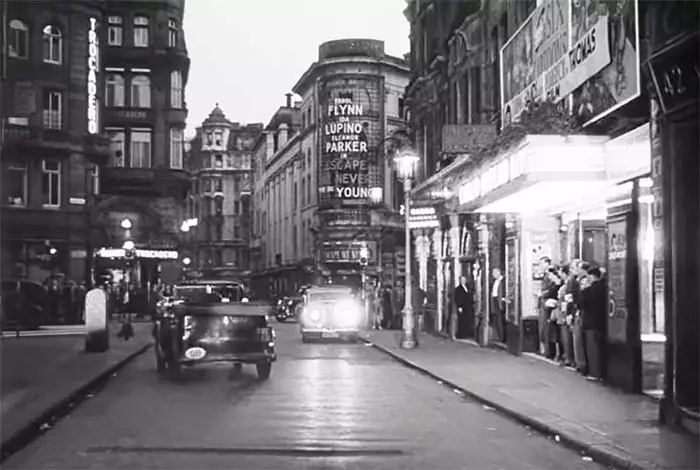
The city itself is presented as a place of constant movement and change. Harry is always on the move, rushing from one location to another in search of his next opportunity. Meanwhile, the camera captures the city’s frenzied energy, with crowds of people rushing past and cars honking in the background.
However, despite its frenetic energy, London in “Night and the City” is also depicted as a lonely and desolate place. The characters are often shown in isolation, whether it’s Harry wandering the empty streets at night or his girlfriend Mary standing alone in her dingy apartment. The city is a place where people come to get lost, to hide from their problems, or to pursue their wildest dreams, but it’s also a place that can swallow them up whole.
POPULAR CULTURE
“Night and the City” has had a significant impact on popular culture and has been referenced and parodied in various forms of media over the years.
One of the most notable examples of the film’s influence is in the world of professional wrestling. The film’s portrayal of illegal wrestling matches inspired the creation of several wrestling storylines and gimmicks, including the “Night and the City Match” and the character of The Fabulous Freebirds’ Michael “P.S.” Hayes, who adopted Harry Fabian’s signature fedora and trench coat.
The film has also been referenced in numerous works of literature and film. Martin Scorsese, a self-professed fan of the film, has cited it as an influence on several of his own films, including “Mean Streets” and “Raging Bull.” Additionally, the Coen Brothers’ film “Miller’s Crossing” draws heavily from the themes and imagery of “Night and the City.”
In the world of music, the film’s iconic theme song, composed by Franz Waxman, has been sampled and referenced in various hip-hop tracks. Additionally, the film’s imagery and themes have been referenced in the lyrics of artists such as Nas and Jay-Z.
Finally, “Night and the City” has been adapted for the stage several times over the years, with productions in both the United States and the United Kingdom. In 1992, a musical adaptation of the film premiered in London’s West End, featuring music and lyrics by the legendary composer and lyricist, Jerry Leiber and Mike Stoller.
Explore more Film Noir
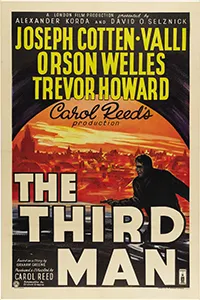
Classic film noir set in post-WWII Vienna, where a writer investigates the mysterious death of his friend.
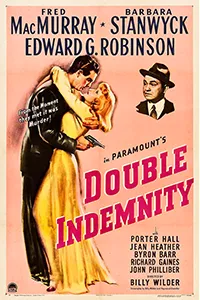
A gripping film noir about a seductive woman who convinces an insurance salesman to plot a murder.
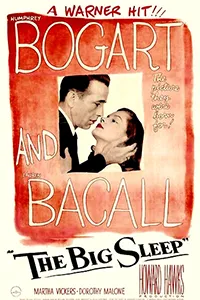
This classic film noir follows private detective Philip Marlowe as he investigates a complex case involving a wealthy family.